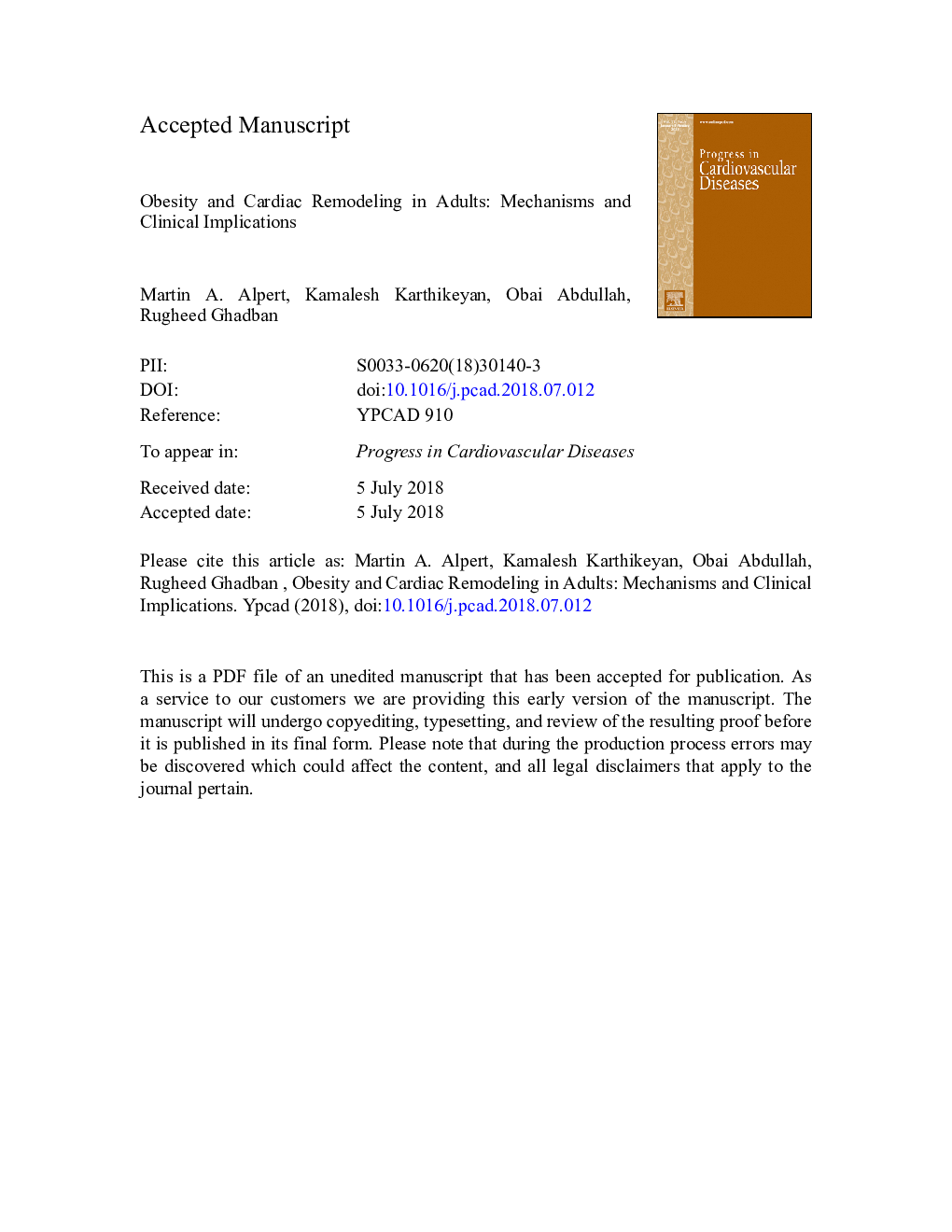| Article ID | Journal | Published Year | Pages | File Type |
|---|---|---|---|---|
| 8963246 | Progress in Cardiovascular Diseases | 2018 | 48 Pages |
Abstract
Obesity, particularly severe obesity is capable of producing hemodynamic alterations that contribute to changes in cardiac morphology which may predispose to impairment of ventricular function and heart failure. These include a high cardiac output state in most, left ventricular (LV) hypertrophy, and LV diastolic dysfunction. Right heart involvement may result from LV failure, the hypercirculatory state, and sleep disordered breathing. In recent years experimental studies and some studies in humans suggest that certain neurohormonal and metabolic alterations that occur commonly in obesity may contribute to alterations in cardiac structure and function. These include activation of the renin-angiotensin-aldosterone and sympathetic nervous systems, hyperleptinemia due to leptin resistance, low circulating adiponectin levels, insulin resistance with hyperinsulinemia, and possibly cardiac lipotoxicity. This review will describe the ways in which these factors weave together to promote adaptations and maladaptations that result in alterations in cardiac structure and function which may contribute to the development of heart failure.
Keywords
SNSright ventricle or right ventricularHTNLVHRAASSVRLeft ventricular diastolic dysfunctionMetabolic abnormalitiesCardiac outputleft ventricle or left ventricularcoronary artery diseasesleep disordered breathingRenin-angiotensin-aldosterone systemsympathetic nervous systembody mass indexBMICADSystemic hypertensioncardiovascularObesitySystemic vascular resistanceheart failureLeft ventricular hypertrophy
Related Topics
Health Sciences
Medicine and Dentistry
Cardiology and Cardiovascular Medicine
Authors
Martin A. Alpert, Kamalesh Karthikeyan, Obai Abdullah, Rugheed Ghadban,
